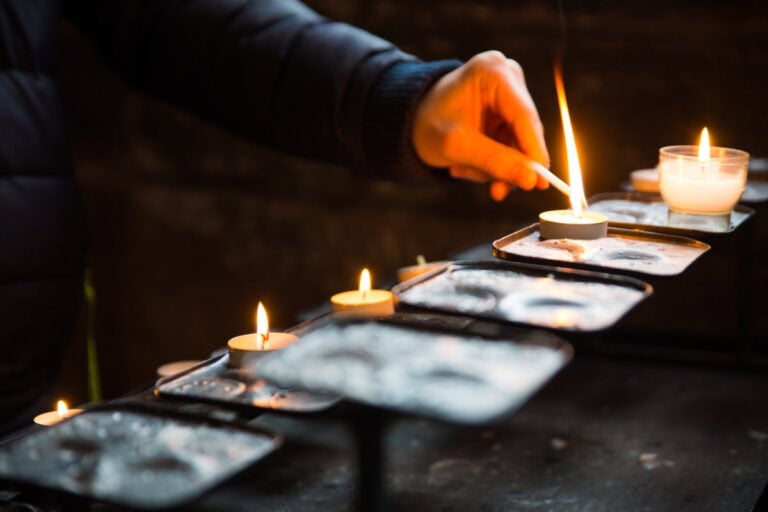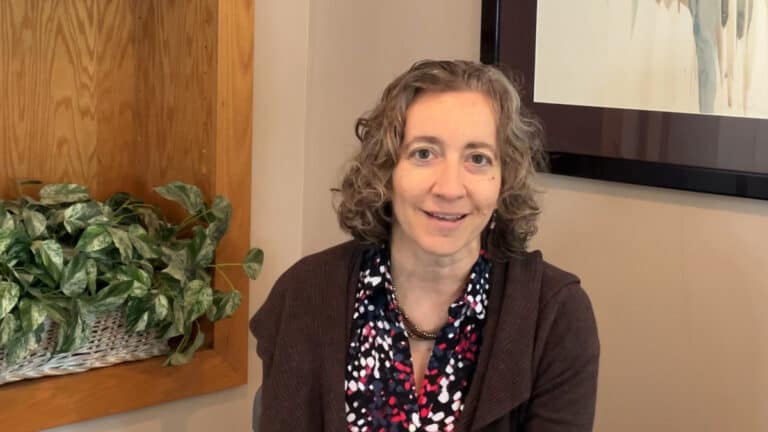In our third article on church documents on music and liturgy, we explore what the documents say about Liturgy of the Word music, including the responsorial psalm, the Gospel acclamation, and other places that music can be used in the liturgy.
If you missed the prior articles, consider reading part one and part two before continuing with this article.
For reference, the following abbreviations are used in this article:
- GIRM – The General Instruction of the Roman Missal
- STTL – Sing to the Lord, Music in Divine Worship
- LFM – Lectionary for Mass
The Liturgy of the Word
Now we begin to examine the first of the two main parts of our Mass. Furthermore, “The main part of the Liturgy of the Word is made up of the readings from Sacred Scripture together with the chants occurring between them. The homily, Profession of Faith, and the Prayer of the Faithful, however, develop and conclude this part of the Mass.” (GIRM 55) It is important to remember this progression and distinction. The holy Word of God is our focus, the rest flows from it. The homily and Prayer of the Faithful are not separate entities with their own agendas and ideas. Rather, they emerge from the Biblical readings.
Here God is speaking to God’s own people. (SC 33, GIRM 55). Yes, “Christ himself is present in the midst of the faithful through his word.” (SC7, GIRM 55) The Liturgy of the Word is not an introduction to something more in the Liturgy of the Eucharist, but a partner and expression of Christ’s presence. In addition, “By their silence and singing the people make God’s word their own . . .” (GIRM 55)
We begin with the lector approaching the ambo and proclaiming the prescribed reading of the day. At the end, the missal gives an option for “The word of the Lord” to be chanted or spoken. This may be sung by someone other than the reader. In addition, the acclamation of the assembly may also be sung. Perhaps during Christmas, Easter, or Solemnities this could be considered. (STTL 154, See also the Lectionary for Mass [LFM] 18)
While the speaking of the texts is preferred, it is also an option for the entire reading to be sung “… in a way suited to different languages.” “This singing, however, must serve to bring out the sense of the words, not obscure them.” (LFM 14)
To support the understanding of the faithful gathered, concise introductions to the readings may be offered. These are designed to briefly situate the passage in a context that the assembly may be made ready to better hear the Word. (LFM 15)
The Responsorial Psalm
The psalm (or sometimes a canticle) “… is an integral part of the Liturgy of the Word and holds great liturgical and pastoral importance, because it fosters meditation on the word of God.” (GIRM 61) It is not simply a song set into this place, nor should it be treated as an acclamation to the first reading. “…it is, in effect a reading from Scripture.” (STTL 155)
“… the faithful must be continually instructed on the way to perceive the word of God speaking in the psalms and to turn these psalms into the prayer of the Church.” (LFM 19) The document also goes to write of a “deeper understanding … according to the meaning with which they are sung in the sacred Liturgy.”
For we who choose settings of the psalms and proclaim them, this mandate should be our constant vision. Our people are meditating on and internalizing God’s sacred word. They are singing the songs of the ancestors: the joys by which they offered praise to God and words of sorrow, distress, and loneliness that sought healing, compassion, and hope. It is surely more than finding a nice setting that fits the rules.
With this in mind, the Church provides some considerations.
“As a rule, the psalm should be sung. There are two established ways of singing the psalm … responsorially and directly.” (LFM 20) Responsorially is given preference. This is probably our most common experience, when the cantor sings the verses, and the assembly sings the response. The sung through (direct) option could be done by the psalmist or sung by the assembly but is without an intervening response. Which option, at what time of year, will help our people internalize these scriptures? This question adds a nuance to the choice of musical options.
In both cases, the Church reiterates the fundamental principle of importance of the assembly’s participation. “The singing of the psalm, or even of the response alone, is a great help toward understanding and meditating on the psalm’s spiritual meaning. To foster the congregation’s singing, every means available in each individual culture is to be employed. In particular, use is to be made of all the relevant options provided in the Order of Readings for Mass regarding responses corresponding to the different liturgical seasons.” (LFM 21)
What psalms do we sing?
- The psalm prescribed in the Lectionary for a particular Sunday or day.
- “… in order that the people may be able to sing the Psalm response more easily, texts of some responses and Psalms have been chosen for the different times of the year or for the different categories of Saints. These may be used instead of the text corresponding to the reading whenever the Psalm is sung. (GIRM 61) See the lectionary #173-174 “Common Texts for Sung Responsorial Psalms.” Some refer to these as seasonal psalms. In addition, note that the response may be changed while the prescribed psalm stays the same.
- Responsorial Gradual from the Graduale Romanum, or the Responsorial Psalm or the Alleluia Psalm from the Graduale Simplex. (GIRM 61) If the Latin is used, the assembly should be given a translation. (STTL 157)
- An antiphon and Psalm from another collection of Psalms and antiphons, including Psalms arranged in metrical form, providing that they have been approved by the Conference of Bishops or the Diocesan Bishop. (GIRM 61)
- For non-Sundays, be sure to check options in the Lectionary for a particular mass. There are the prescribed options for some saints as well as the Commons of the Saints, Votive Masses, Ritual Masses and Masses for Various Needs and Occasions. All might be helpful.
Never is the psalm replaced by a hymn or song. Remember, this is a selection from Sacred Scripture we are providing for the assembly upon which to grow in faith. (GIRM 61)
If, after all options have been considered, the psalm is unable to be sung, it is recited in a way suited to meditation and reflection. (GIRM 61/ LFM 22)
The psalm is always proclaimed from the ambo. (LFM 22)
Gospel Acclamation
Now the assembly rises to welcome the Lord who will speak to them. (LFM 23) Except in Lent, when an alternate acclamation is prescribed, we sing the Alleluia. While usually the cantor intones the acclamation, repeated by the assembly, “It is not to be sung only by the cantor who intones it or by the choir, but by the whole of the people together.” (STTL 161) The Gospel acclamation is always sung. (LFM 23)
If there is one reading before the gospel, if the Alleluia or verse cannot be sung, they may be omitted. (GIRM 63 c)
The Gospel
Of course, the Gospel is the high point of the Liturgy of the Word. If there is a Book of the Gospels, it is processed from the altar (where it was placed in the Entrance procession) during the Gospel Acclamation to the ambo. The procession may include candles, incense, or other symbols of reverence. (LFM 17)
The Gospel, of course, may be sung. “This singing, however, must serve to bring out the sense of the words, not obscure them.” (STTL 168) If the Gospel is not sung, it is appropriate for the greeting and “The Gospel of the Lord” to be sung with the assembly’s acclamations (see the Order of Mass, #14-16) or it may be spoken.
The Homily
The homily is said that all may understand. However, this does not inhibit the creativity of the preacher in including music. Acclamations, common refrain, or other music may be used during the homily as long as the intent remains: to open up the Scriptures for the people.
Profession of Faith
“The Creed is to be sung or said by the Priest together with the people on Sundays and Solemnities. It may be said also at particular celebrations of a more solemn character. If it is sung, it is intoned by the Priest or, if appropriate, by a cantor or by the choir. It is then sung either by everybody together or by the people alternating with the choir. If it is not sung, it is to be recited by everybody together or by two choirs responding one to the other.” (GIRM 68) See #18 in the Order of Mass for a chant version of the creed or in Appendix 1 of the Roman Missal.
Prayer of the Faithful
Here the people of God offer their prayers to the Lord, responding to the Word that they had just heard. “Because it has the structure of a litany, and provided that it can be understood when sung, it is appropriate to sing the Prayer of the Faithful, or just the invitation and response, or even the response only.” (STTL 171)
There are multiple musical settings for the response to these prayers and creativity that supports the liturgical action is possible as well. For example, a response sung prior to the intercessions and following, or after each intercession, or underpinning without a sung response, or perhaps a spoken response, or a spoken intercession with a sung conclusion and response. One option is found in Appendix 1 of the Roman Missal. Many others are available from liturgical music publishers, or you can consider an appropriate acclamation taken from a refrain of a common song.
Interested in learning more about the church documents on music and liturgy? See the full series here:
- Church Documents on Music and Liturgy Part I – Introduction
- Church Documents on Music and Liturgy Part II – Music in the Introductory Rites
- Church Documents on Music and Liturgy Part III – Liturgy of the Word Music (this article)
- Church Documents on Music and Liturgy Part IV – Liturgy of the Eucharist Music
Written by Mary Dumm, D.Min, who is a founding board member of CLEF and the pastoral associate at St. Blase Church in Sterling Heights, Michigan. Additionally, she teaches at Siena Heights University and SS. Cyril and Methodius Seminary.
Copyright © 2024 Catholic Liturgical Ensemble Formation
Looking for more resources? Search our full online library of CLEF Life resources, or sign up for CLEF Life email updates to receive the latest resource in your inbox once a week.



